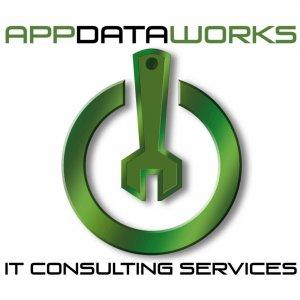AppDataWorks

How To Successfully Install SQL Server 2005 In Windows 8
Check out the YouTube instructional video on how to successfully install sql server 2005 in windows 8.
HOW-TO: Successfully Install SQL Server 2005 In Windows 8 or Windows 8.1
In the video, I will show you how to install SQL Server 2005 in Windows 8 and overcome this error message:
The SQL Server service failed to start. For more information, see the SQL Server Books Online topics, "How to: View SQL Server 2005 Setup Log Files" and "Starting SQL Server Manually."
Installing SQL Server 2005 in Windows 8 or Windows 8.1 (as well as some other Operating Systems) can be a frustrating and hair pulling task. For those of us who write software for a living, Microsoft makes it difficult to buy a new PC with a new operating system and install an older version of the SQL Server software. We know we need it to do our jobs. Microsoft thinks it's too old and everybody should upgrade. The problem is, we can't all afford to operate and maintain multiple machines with different OS's just to host different versions of SQL Server. Even according to Microsoft's own documentation, the only SQL Server version that is supported in a Virtual Machine environment is SQL Server 2008 R2 and above, and ONLY on Hyper-V. I've got VMWare Workstation and have for years, and for the life of me, as many times as I've tried to create a virtual machine environment for SQL Server 2000 or SQL Server 2005, it never works out. The VM's are way too slow compared to installing in the native OS tied to the hardware without any additional processing layers.
So there are those developers out there, just like me, who find themselves in need of a new PC and they can only get the latest OS from Microsoft. We purchase our powerhouse PC from one of the big stores and bring it home. Chances are you purchased Windows 8/8.1 Home Edition and now you want to upgrade to Windows Professional or Ultimate. So you go through all of that, then you start installing software.
For me, when I install a whole new machine, I do it in incremental, logical steps. I try to install my various development tools in a manner that reflects the linear timeframe that they came out. So, I may install Visual Studio 2008, Visual Studio 2010, then Visual Studio 2012, and in between I'll be installing SQL Servers and 3rd party components that were around during the time the development IDE's were out.
After a few hours of installing OS upgrades, running Windows Update (which I do constantly during this process), and other software, I finally get to SQL Server 2005 and it won't install. I'm dead in the water.
So what do I do? I do what I've done a thousand times (and you probably have too). I think - this is a much more powerful machine than the last one, maybe a VM will work this time. So I install VMWare Workstation, create a VM for my SQL 2005 installation, purchase and install a separate hard drive just for the VM's, and then I go about installing Windows Server 2003 and SQL Server 2005. I always install 2 instances: DEV and STAGING. It's got to do with my workflow.
A couple of days later and literally dozens of software installs, windows updates, incremental backups with ShadowProtect, I am ready to start working. I have a timekeeping application I wrote in Access as an ADP which I use to keep track of billable time. I fire that up, fix the connection to the new server instance running in a VM, and restart it. The first thing I get is an error telling me the code that tries to go to the last record failed. It's OK, I just click OK and then click the Last Record button in the record navigator at the bottom of the form. But it's a real pain in the ass, you know? I just came off of Windows 7 Ultimate laptop with an i7 Processor and 16 GB of RAM where I used SQL 2005 installed and never had this problem. It's only with VM's and many years of experience and my built-in ability to just "know" what the problem is tells me it's a IO issue with SQL Servers IO Subsystem which wants to commun...






 Visit Podcast Website
Visit Podcast Website RSS Podcast Feed
RSS Podcast Feed Subscribe
Subscribe
 Add to MyCast
Add to MyCast